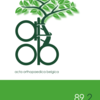Fractures of the fifth metacarpal neck treated by syndactyly: functional and quality of life outcomes of a series of 39 patients
metacarpal, syndactyly, work, follow-up
Published online: Aug 12 2023
Abstract
The management of the fractures of the fifth metacarpal neck is still debated between surgical, orthopedic, and functional treatments. The main objective of our study was to report the functional results at two, six, and twelve weeks of patients treated with syndactyly for fifteen days for a fracture of the neck of the fifth metacarpal and to determine if these results were compatible with a short-term medical follow-up and if they allowed for a quick return to work. Thirty-nine patients were retrospectively included. Functional results and their variations were analyzed at two, six, and twelve weeks using self-questionnaires filled out during consultation (VAS scores, QuickDASH, EuroQol-5D-5L, and EuroQol- 5D-VAS). The duration of work leave was extracted from medical records. Two weeks after the trauma, patients mostly had a very moderate impact of their fracture on their daily life with an average VAS of 4.2±1, QuickDASH of 42.2±20.9, and EuroQol-5D-VAS of 78±11. QuickDASH and EuroQol-5D-VAS scores showed significant improvement between two and twelve weeks of follow-up, decreasing from 42.2±20.9 to 2.1±6 and from 78±11 to 96±6, respectively (p<0.0001). The dimensions of common activities, pain, and autonomy had the most patients in the “moderate impairment” subgroup at two weeks. Only the dimension of common activities still had 21% of patients moderately impacted. Twenty-five patients returned to work at an average of 21.8±1.5 days. Syndactyly treatment offers good functional results at two weeks that are confirmed during follow-up, compatible with reduced medical follow-up and early return to work.
